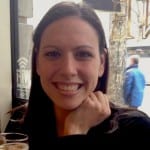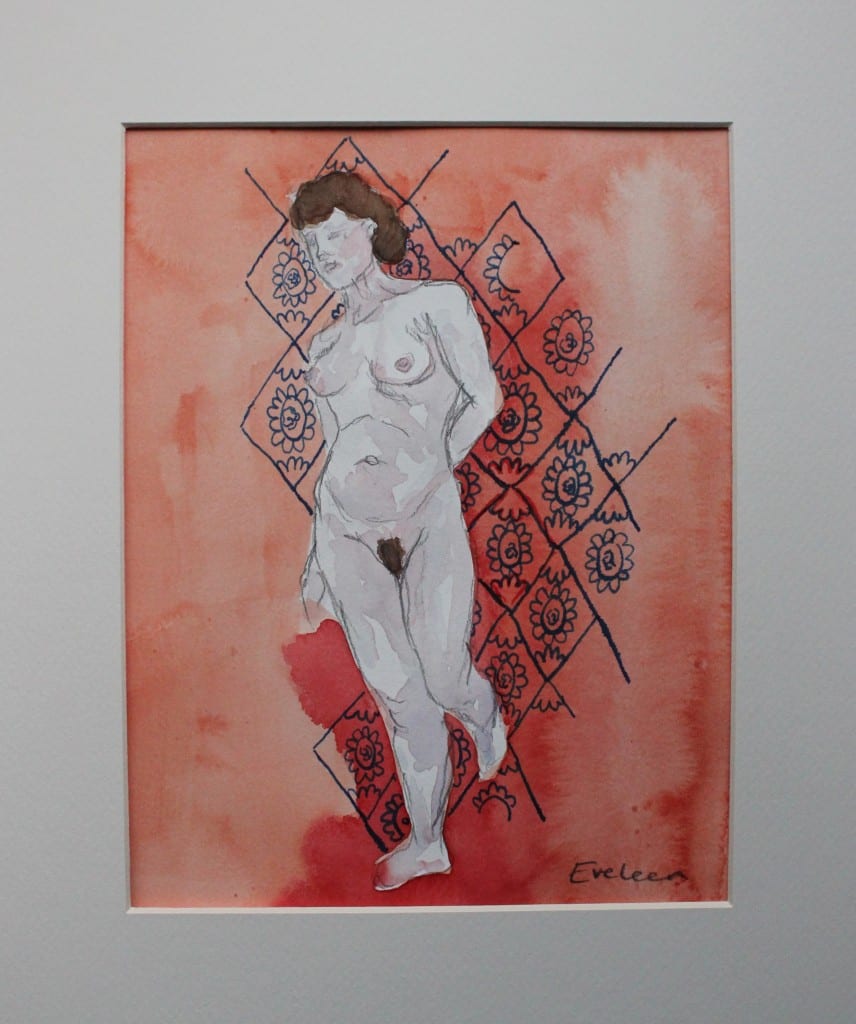Exploring Perception: Time-based Media at the UCL Art Museum
By Lisa, on 10 February 2014
Time-Based Media brings together ten multimedia works which depend on technology and can therefore change meaningfully in response to time, including, but not limited to, video, experimental film and audio. All the works in the exhibition are linked in their aim to create a dialogue between viewer and object; to meaningfully provoke an engaging experience. At work under the surface of this engagement is perception, an environmental involvement in which we, the experiencers, receive stimuli to which not only our senses respond, but also our cognitive process. The pieces collected here are not solely visual or static. In this respect they challenge both what we expect to encounter in the rather traditional and certainly serene surroundings of the UCL Art Museum, and moreover what we might expect to experience when we ‘look at art’.
In my research into the perception of landscape, I subscribe to the definition put forward by Allport in his work on the subject some years ago. For him, perception:
‘has something to do with our awareness of the objects or conditions about us. It is dependent to a large extent upon the impressions these objects make upon our senses. It is the way things look to us, or the way they sound, feel, taste, or smell. But perception also involves, to some degree, an understanding awareness, a “meaning” or a “recognition” of these objects’ (1955, 14).
This definition advocates – as do I – the cognitive (as opposed to behaviourist, or gestalt) approach to perception, whereby we understand that the perceptive process is not limited solely to a stimuli-response pattern of observable behaviours, but ‘is influenced by many cultural, experience-based and individual factors that underlie interpretation’ (Campos et al. 2012, 760). It is these factors, mediated by the perceiver’s cognitive and emotional responses, that are so valuable for my personal research into attitudes to landscape preferences, but also to a consideration of how viewers might respond to some of the works curated in Time-based Media.
Take The Printer’s Symphony (2013), a collaborative work by Dana Ariel, Julia McKinlay, Eleanor Morgan and Georgina Tate. A beautiful concertina-fold of card stretches along the length of the case, bringing together prints from the four artists, demonstrating a number of processes, mounted and detailed with added embossings. So far, so good – we as gallery visitors are used to seeing pristine works, safely displayed in cases. However, unusually the object is also accompanied by four minutes of audio, emanating from a hidden speaker, composed of a pastiche of recorded sounds from the print-maker’s studio. At first, our senses are fooled – the everyday noises sound like someone working outside, or upstairs, because memory and therefore knowledge has conditioned us to interpret this as the most likely cause amongst the perceived milieu. On paying closer attention, though, the sound quickly changes and it is soon easy to be drawn in to the soundscape of filing, spraying, rinsing and rolling – an evocative soundtrack of making, which is strangely difficult to connect to the perfect artwork in the case. This is exactly what the artists were hoping to capture – a method of bringing the process of making into the gallery, of bridging the gap between the Slade School of Fine Art and the UCL Art Museum. Thanks to perception, upon listening whilst also observing the work, we can now imagine what the studio environment is like – using the sounds as a trigger to remembered encounters, we can ‘see’ in our mind’s eye how it might appear, or smell the scent of the materials, the feel of a tool-handle in the hand.
In this engagement with The Printer’s Symphony, we can see clearly how memory serves as an essential factor of perception; through memory, we can achieve knowledge, and consequently inform our interpretation of later perceived environments – I remember what workshops are like, and therefore the sounds I encounter in the artwork recall this memory to my mind as I experience it. This type of memory is known as embodied: in which the immersive quality of the experience fully engage the senses to evoke memories beyond those that can be summoned solely by looking at a photograph, for example (Rishbeth and Powell 2013). Viveka Marksio’s work Embodied/Disembodied (v.1) taps into this embodiment, by using computer-generated imagery to take the viewer on a journey through the interior spaces of the Slade School as they are being slowly flooded. The piece aims to ‘recreate the sensations of the body in a threatening and claustrophobic physical space’, and the video is helped to achieve this by the carefully constructed soundtrack which comprises a resonant series of bass notes, with sporadic industrial echoes. Unlike The Printer’s Symphony, whose accompanying audio is ambient in the gallery, Embodied/Disembodied (v.1) (like other works in Time-Based Media) requires the viewer to wear headphones; whilst this is not unusual perhaps, in this instance it is worth noting the effect of the headphones in contributing to the sense of enclosure and threat evoked by the piece. The noise-canceling qualities, along with the sensation of pressure on the head, all add to the perceptive blend of the engagement.
In I am unique and so is everybody else (2012), Nicholas Feldmeyer achieves a similar effect using solely video. This 15-second looped video collage layers footage of the natural movement of tree branches in the wind with a digital pattern of black dots to create a random movement which is at once hypnotic and contemplative. In contrast to The Printer’s Symphony or Embodied/Disembodied (v.1) the work has no soundtrack, but its immersive simplicity makes it easy for the viewer to call up the sensations that would accompany an encounter with wind in the branches – the sound of it whipping through the trees, the feel of the air on the skin. Again, our perception is informed by memory – we know what this would feel like. And yet visually the beholder is confused by the work; the natural pattern of the branches has been overlaid by a subtle digital intervention, the scene is not quite as it first appeared.
Similarly, Feldmeyer challenges our expectations with My people, humble people (2012), in which small digital ellipses have been overlaid on raindrops as they fall into a puddle. In both pieces, the subtlety of the overlays confuses our perception and encourages close scrutiny – are we looking at the natural phenomena or the digitally imposed details? Where does one stop and the other begin? In terms of our exploration of perception, the effect is pertinent. Although in our daily life perceptual modalities like hearing, touch, smell and taste are extremely important in negotiating our relationship with the outside world, nevertheless, most of the perceptive encounters we have with the environment are conducted visually (Ballesteros 1994). And yet is this the most important? Should we be more cautious in prioritising it over our other senses? Time-Based Media offers the opportunity to question the perceptive process, and encourages us to scrutinise our responses to what we see and how we orientate ourselves to it.
Time-Based Media is on at the UCL Art Museum until 28 March 2014
Allport, F. H. (1955) Theories of Perception and the Concept of Structure New York: Wiley
Ballesteros, S. (1994) Cognitive Approaches to Human Perception: Introduction, in: Ballesteros, S. (Ed.) Cognitive Approaches to Human Perception New Jersey: Lawrence Erlbaum Associates, Publishers
Campos, M., Velazques, A., Verdinelli, G. B., Priego-Santander, A. G., McCall, M. K. and Boada, M. (2012) Rural People’s Knowledge and Perception of Landscape: A Case Study from the Mexican Pacific Coast Society and Natural Resources: An International Journal 25 (8) pp. 759-774
Rishbeth, C. and Powell, M. (2013) Place Attachment and Memory: Landscapes of Belonging as Experiences Post-Migration Landscape Research 38 (2) pp. 160-178
 Close
Close







